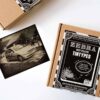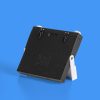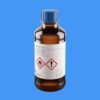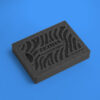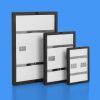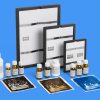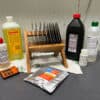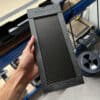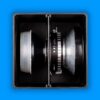About me
How Zebra was born?
It all started back in 2017 when I had to select a theme for my bachelors degree from the Academy of Fine Arts and Design in Ljubljana. For as far as I can remember I had a thing for old things and crafts that sank to oblivion long before me. Ask my grandmother and she will tell you how one could find me either in the forest building tree houses and spending time in nature or making things mostly from wood in our home garage. So if you are a student of photography that likes old things and handwork you simply read through the first few pages in the History of Photography book and there is your topic right? I was born into the digital age shooting landscapes with my DSLR and had little to no clue about analog photography by then but this was exactly what I have done.
After reading through a few books a whole new world opened up for me. I was overwhelmed by the numerous techniques from Daguerreotypes, Salt Printing, Wet & Dry Plates, Cyanotypes, Van Dyke but the technique that grabbed my attention the most with its mystery and pointillistic beauty was Autochrome. Yeah I admit I didn’t know what I was getting myself into but hey I always loved challenges! And what a challenge it was. Because there is very little to no information out there regarding the process it took me two years to figure things out but the journey was well worth it. I learned many things along this journey, one of them being how to make and coat with silver gelatine emulsion. Since many of you are getting in touch with Dry Plates for the first time let me show you my very first Dry Plate coated with my own Silver gelatine emulsion (Ortho) shot back in 2017.
When trying to make a contemporary Autochrome I gained a better understanding of what it really meant to be a photographer back in the days when photography was not just about capturing moments but it was foremost a craft. And at this point I realised that I can merge two passions, photography and handcraft into one so I continued making Dry Plates and exploring other historical processes. I got addicted with the magic of it all and started to spend more and more time in my shipping container darkroom. For the first two years I made emulsions and coated plates mostly for myself and colleagues working hard in our family tourist office just to cover the cost of silver nitrate.
We all know what happened to tourism in 2020 when the virus started spreading. We literally had to shut down overnight and the situation for everyone working in this industry became hard, very hard. I dreamed of being a craftsman since I was a little boy but never had enough courage to say no to a secure income. Being a student, living from paycheck to paycheck I suddenly had no other choice but to go all in. And so the Zebra was “born”. After many months of experimenting and figuring out how to produce plates in larger quantities I coated and sold my very first box of plates in December of 2020. In a couple of weeks I sold another box and another and so the ball started rolling. It was definitely not an easy start but I was determined to make my dream job a reality so besides Zebra Dry Plates I soon started working on a new line of Zebra Dry Plate / LF equipment that makes shooting with Dry Plates much more accessible and enjoyable. Besides expansion of the Zebra workshop, my passion and goal remain the same. I am convinced that making Dry Plates and sharing the beauty of forgotten photographic techniques is my life’s purpose. Like with other crafts also Dry Plate production is based on hard work that requires a lot of precision, consistency and very strong dedication. But seeing others shooting the plates you’ve made with your own hands just a few days prior and seeing all the joy they have while making beautiful photographs is definitely worth the grind. Thank you for helping me keep this craft alive!

